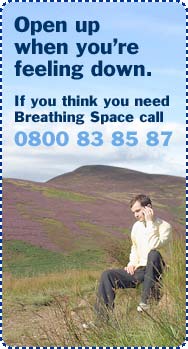Self-harm

Quick links on this page:
Related page:
How might this affect me?
Always remember that you are not alone and that you can get help.
- Cutting
- Burning
- Overdosing on tablets or medicines
- Punching
- Throwing the body against an object
- Pulling out of hair or eyelashes
- Scratching, picking or tearing at their skin
- Inhaling or sniffing harmful substances
- Swallowing objects
- Inserting objects into the body
- Tying ligatures around the neck, arms, or legs to restrict the flow of blood
- Ingesting small amounts of toxic substances or objects to cause discomfort and damage but with no intention to die.
What causes me to be like this?
- Poor physical self image
- Low self-esteem
- Being bullied or discriminated against
- Loss of a close friend or loved one
- Lack of love and affection
- Parental or carer neglect
- Abuse of a physical, emotional or sexual nature
- Relationship failures such as broken romances
- Peer pressures
- A serious illness that affects the way you feel.
Can self-harm be my way of coping?
When feelings of extreme fear, anger, guilt, shame, helplessness, self-hatred, depression or despair become unbearable and problems appear to be insurmountable, self-harm can be a way of coping as it:
- Temporarily relieves intense feelings, pressure or anxiety
- Provides a sense of being real, being alive – of feeling something
- Is a way to externalise emotional internal pain – to feel pain on the outside instead of the inside
- Is a way to control and manage pain – unlike the pain experienced through physical or sexual abuse
- Is a way to break emotional numbness (the self-anaesthesia that allows someone to cut without feeling pain)
- Is self-soothing behaviour for someone who does not have other means to calm intense emotions
- Serves as a punishment for having strong feelings (which they were usually not allowed to express as children), or for a sense that somehow they are bad and undeserving (an outgrowth of abuse and a belief that it was deserved)
- Is a way to express self-care [following the act of self-harm], to be self-nurturing, for someone who never learned how to do that in a more direct way
- Can be a way to draw attention to the need for help, to ask for assistance in an indirect way
- May be an attempt to affect others – to manipulate them, make them feel guilty or bad, make them care, or make them go away.
Some individuals have described it this way:
"When the pressure becomes too great for me it acts as a safety valve and relieves the unbearable tension."
"When I cut myself the blood takes away all the bad feelings."
"I just feel numb and the pain makes me feel alive again."
"Seeing the blood is, overall, the most significant part of my cutting. Pain has been a constant in my life, as far as I can remember anyway. This constant manifests itself in blood."
If you need help right now, visit the Immediate Help page.



